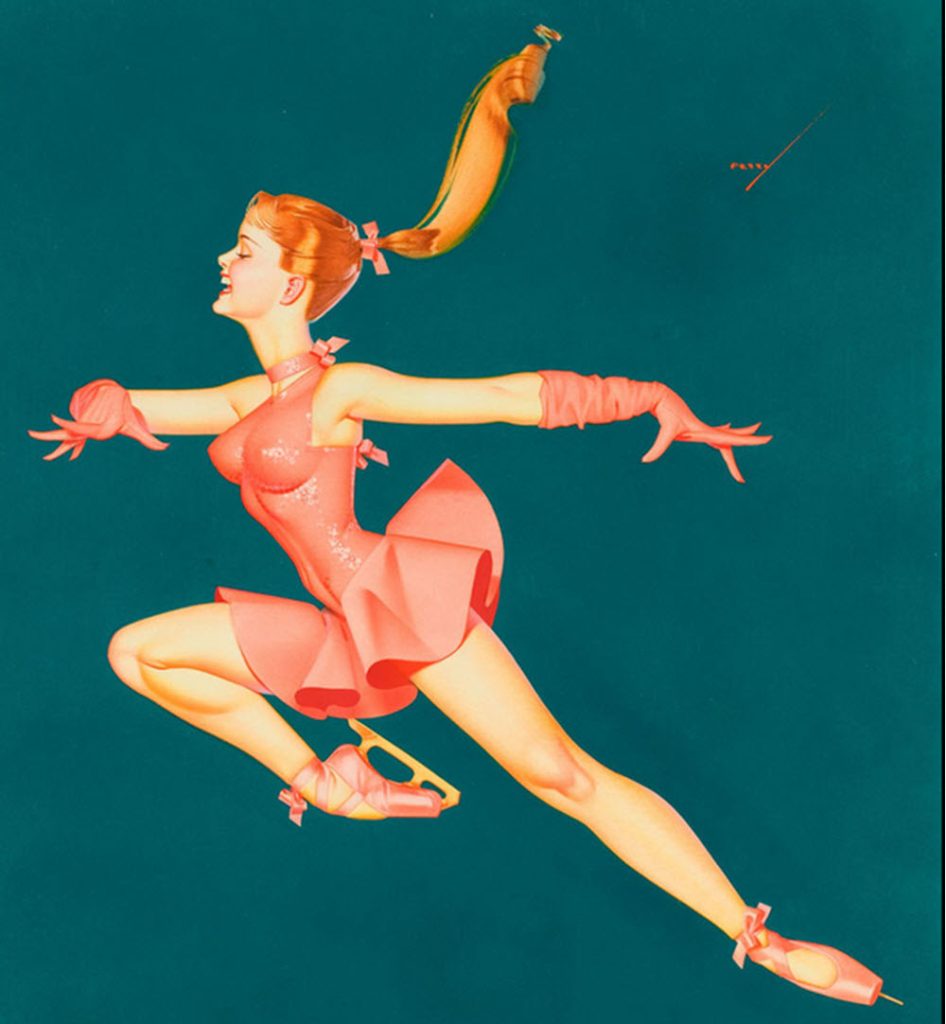Contents
George Petty (1894-1975), a name synonymous with classic pin-up illustrations and American pop culture, rose to fame the mid 20th century. Widely acclaimed for his ideation of the term ‘Petty Girl’, he cemented his place in the annals of art history. This article aims to delve into Petty’s influential artistic journey, his defining style, and massive contribution to pin-up art and advertising.
George Petty’s artistry traversed beyond the borders of magazine pages. In the late 1930s, he collaborated with Jantzen, a swimsuit manufacturer, which led to a significant boost in their national sales. His work also laced calendars and novelty items, and even adorned aircraft nose art during World War II, exemplifying his widespread impact.

Early life
George Petty was born on April 27, 1894, in Abbeville, Louisiana, to George Brown Petty III and his wife Sarah. George IV was the couple´s second child; their daughter Elizabeth had been born in 1891.
Soon before the end of the 1800s, the Petty family moved from Abbeville to the big city Chicago where George III, who was a photographer, enjoyed considerable professional success. Just like his son would later, George III sold a lot of images of women.
The young George IV was not a high-achiever in school and spent a lot of time doing extracurricular activities rather than schoolwork. He was the staff artist for the school newspaper, already exhibiting a pechant for artistic creativity. During his teenage years, George IV would also assist his father with photo retouching and learning how to use an airbrush.
During his high school years, George Petty took evening classes as the Chicago Academy of Fine Arts where he was tutored by Rush VanSickle Ford. Eventually, he would also begin offering his own art course, charging his classmates 5 USD per session.
Young adult
After high school, studied at both the Art Institute of Chicago and the Académie Julian in Paris. In 1916, World War I caused Myron T. Herrick, the U.S. Ambassador to France, to order all U.S. students in France to leave. Petty returned to Chicago, where he got a job as an airbrush retoucher for a priting company.
It was back in the United States that Petty really began his magnetic voyage into the world of commercial artwork. He established himself as a freelance artists who, among other things, painted calendar girls and magazine covers for The Household. In 1926, he opened his own studio.
Petty’s career-defining moment arrived when he started working for Esquire Magazine in the 1930s. Famous as the creator of the “Petty Girl”, his sensually elegant and stylized depictions of women became iconic in commercial art.
The Petty Girls
The “Petty Girl”, flaunting a svelte body with exaggerated curves, captured the quintessential U.S. fictional female epitome. These pin-ups, initially appearing in the center-fold of Esquire, soon gained immense popularity. The girls were coquettish, yet strong, beautifully weaving the string of sensuality and independence simultaneously. Petty’s airbrush technique and use of minimal backgrounds strategically drew the viewer’s focus to these charismatic characters, causing a swift ripple in the advertising world and beyond.
The Petty Girls appeared in the Esquire from its first issue in 1933 to 1956. Petty used real models as inspirations for his drawings, but frequently gave the Petty Girls longer legs and smaller heads than their live counterparts.
Examples of famous Petty Girl images
- The famous World War II B-17 Flying Fortress “Mephis Belle” had a Petty Girl talking on the phone as nose art.
- In 1959, a vector rendition of the Petty Girl was used as part of the diagnostics for a SAGE defense computer. The image came from a 1956 Esquire calendar.
- The 1967 album cover for “Sgt. Pepper’s Lonely Hearts Club Band” by The Beatles feature two Petty Girls.
Legacy
Petty parted ways with Esquire in 1956 but continued to create enchanting “Petty Girls” for calendars, advertisements, and Hollywood films. Today, his work stands as a nostalgia-evoking symbol of an era signified by its distinctive pop culture and societal shifts.
George Petty’s lifetime talent and contributions performed a pivotal transformation in the realm of commercial and pin-up artistry. The rise of the iconic “Petty Girl” not only redefined advertising norms but also echoed a new female independence depiction, making him an influential figure that we look back on with admiration and awe.
